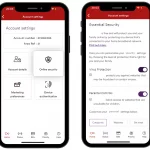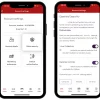BT Creeps to 9.3 Million UK Retail Broadband Subs as Ultrafast Fibre Grows
The BT Group has published their latest results for Q3 2017 (calendar), which saw their retail broadband base add 22K subscribers to total 9,307,000 (up from 19K in Q2 vs 29K in Q1) and this includes 5.285 million “fibre broadband” FTTC/P users (up by 179K vs 170K in Q2 and 211K in Q1).
Broadly speaking the last three months have been a lot kinder to BT than the first half of the year. During the quarter BT pledged to cut its carbon emissions by 87% for 2030 (here), proposed to deliver the Government’s 10Mbps USO (here), cancelled the launch of a Dark Fibre product (here) and replaced it with something else (here).
Meanwhile they’ve also started to extend their 330Mbps G.fast broadband pilot to 1 million premises (here), consulted on a “large scale” FTTP rollout (here), engaged in a legal battle with Three UK over Ofcom’s forthcoming 5G mobile auction (here) and cut the price of 1Gbps – 10Gbps Cablelink services for ISPs (here).
Advertisement
Financial Highlights – BT’s Quarterly Report
* BT Group quarterly revenue = £5,951m (up from £5,849m in Q2 2017 calendar)
* BT Group reported profits before tax = £666m (up from £418m)
* BT Group total net debt = £9,520m (up from £8,810m)
* BT Wholesale quarterly operating profit = £109m (up from £98m)
* Openreach quarterly operating profit = £277m (up from £271m)
* Openreach quarterly capital expenditure = £397m (up from £390m)
As usual BT has also issued an update on their capital expenditure and clawback (gainshare) from the Government’s Broadband Delivery UK roll-out scheme (i.e. public investment returned by BT due to rising take-up in FTTC/P covered areas), which reveals that £477m (up from £465m last quarter) of public funding may potentially become available for reinvestment into further UK coverage of “fibre broadband” services.
Capital Expenditure and BDUK
Our base-case assumption for take-up in BDUK areas remains at 39% of total homes passed. Under the terms of the BDUK programme, we have a potential obligation to either re-invest or repay grant funding depending on factors including the level of customer take-up achieved.
While we have recognised gross grant funding of £52m (Q2 2016/17: £34m) in line with network build in the quarter, we have also deferred £13m (Q2 2016/17: £21m) of the total grant funding to reflect higher take-up levels on a number of contracts. To date we have deferred £477m (Q2 2016/17: £292m).
The Government has already signalled that it intends to use this reinvestment to help push the coverage of “superfast broadband” to approximately 98% of UK premises by around 2020 (here).
BT Consumer / Retail
BT’s retail broadband ISP continues to hold the largest single share of “fibre broadband” subscriptions on Openreach’s national UK network (details below) and growth appears to be strong (quite a few of the additions are likely to be upgrades from older ADSL services).
Elsewhere BT’s mobile base (EE) continues to bleed customers, although their 4G subscribers have grown from 19 million in Q2 to 19.4 million now. EE also reported that their geographic (landmass) 4G network coverage of the UK is now 86% and they aim to reach 95% by the end of December 2020. Finally, BT’s Pay TV base is still struggling for growth.
Advertisement
| Broadband Subs | TV Subs | Mobile Subs + EE |
Fibre Subs | |
| Q3 2017 TOTAL |
9,307,000 | 1,765,000 | 29,736,000 | 5,285,000 |
| Subs Change (Q3) | +22,000 | +7,000 | -45,000 | +179,000 |
| Q2 2017 TOTAL |
9,286,000 | 1,758,000 | 29,782,000 | 5,105,000 |
| Subs Change (Q2) | +19,000 | +8,000 | -130,000 | +170,000 |
Openreach & Wholesale
Openreach’s national telecoms and broadband network serves various ISPs across the United Kingdom, including BT itself (i.e. the total broadband and “fibre” lines listed below combine customers from BT’s own service as well as many other ISPs).
At present the operator’s “fibre” network covers 27.1 million UK premises and the majority of those are reached via their slower ‘up to’ 80Mbps capable FTTC (VDSL2) services. Meanwhile around 770,000 can access an “ultrafast” (100Mbps+) FTTP or G.fast connection (up from 550,000 in Q2). G.fast is still in the pilot stage but should cover 1 million premises by the end of 2017 before rising to 10 million by 2020 (the total will be 12 million when FTTP is included).
Note: Unbundled (LLU) lines are mostly used by ISPs that have installed some of their own kit inside Openreach’s network in order to gain more control over their products and prices (e.g. TalkTalk and Sky Broadband). On this front fully unbundled (MPF) lines are more popular because they give ISPs the most control and flexibility to differentiate themselves.
| Total UK Broadband Lines |
Fully Unbundled MPF Lines |
Shared Unbundled SMPF Lines |
Fibre Lines (FTTC/P) |
|
| Q3 2017 TOTAL |
20,489,000 | 9,062,000 | 1,243,000 | 8,640,000 |
| Lines Change (Q3) | +64,000 | +13,000 | +40,000 | +505,000 |
| Q2 2017 TOTAL |
20,425,000 | 9,049,000 | 1,203,000 | 8,134,000 |
| Lines Change (Q2) | +36,000 | +2,000 | +22,000 | +437,000 |
It’s worth noting the quarterly increase of +505,000 in new “fibre broadband” (FTTC/P) lines, which includes the +179,000 added via BT’s own ISP. The outcome means that BT’s rivals accounted for +326,000 of the total increase (sharply up from +267K in Q2 and +309K in Q1).
Advertisement
Separately, BTWholesale delivered a total of just 877,000 external broadband lines for other ISPs, which is down by -11,000 in the quarter.
Gavin Patterson, CEO of BT Group, said:
“Our first half results are in line with our expectations as encouraging results in our consumer facing lines of business, notably EE, helped offset ongoing challenges in our enterprise divisions, in particular Global Services. Given our underlying business performance, we are maintaining our outlook for the year.
As the UK’s leading converged telecommunications provider we continue to make positive progress on all our strategic priorities. Improving customer experience is critical to our success and we have seen continued positive progress underpinned by investments in operational improvements, increased network quality and customer-centric product development.
Our integration and restructuring programmes are also on track to deliver run-rate savings of £250m and £150m respectively by the end of this year. We are working closely with the UK Government, Ofcom and our Communications Provider partners to find the right solutions to accelerate the deployment of fibre and our universal broadband commitment. We are committed to delivering ultrafast speeds to 12 million premises by the end of 2020.
From next year the interim dividend per share will be fixed at 30% of the prior year’s full year dividend. However, in this transitional year, we are proposing to hold our interim dividend at 4.85 pence per share. Our progressive dividend policy remains unchanged.”
The latest set of results was fairly mild compared to the turbulence of previous quarters, although there are a few developments to watch out for over the coming months. Firstly, the roll-out of G.fast is now starting to gather pace and several ISPs (smaller providers) have indicated that they could launch related packages before the end of 2017.
Likewise there’s a big question mark over the outcome of Openreach’s FTTP consultation, which ended last month and could result in a large-scale deployment of their 1Gbps capable “full fibre” (FTTP/H) network to possibly as many as 10 million premises by around 2025. Various ISPs have engaged in this and different models have been considered. We should know more once their network strategy is published by the end of 2017.
The other development to keep an eye on will be whether or not the Government’s chooses to adopt BT’s proposed solution for the 10Mbps Universal Service Obligation (USO), which is still being decided. However, perhaps the biggest impact could come from Ofcom’s review of the wholesale local access market, which might make fibre services cheaper, albeit at the cost of damaging the investment case for FTTP.
Mark is a professional technology writer, IT consultant and computer engineer from Dorset (England), he also founded ISPreview in 1999 and enjoys analysing the latest telecoms and broadband developments. Find me on X (Twitter), Mastodon, Facebook, BlueSky, Threads.net and Linkedin.
« Virgin Media UK Grows to 5.08 Million Cable Broadband Subscribers


















































Comments are closed